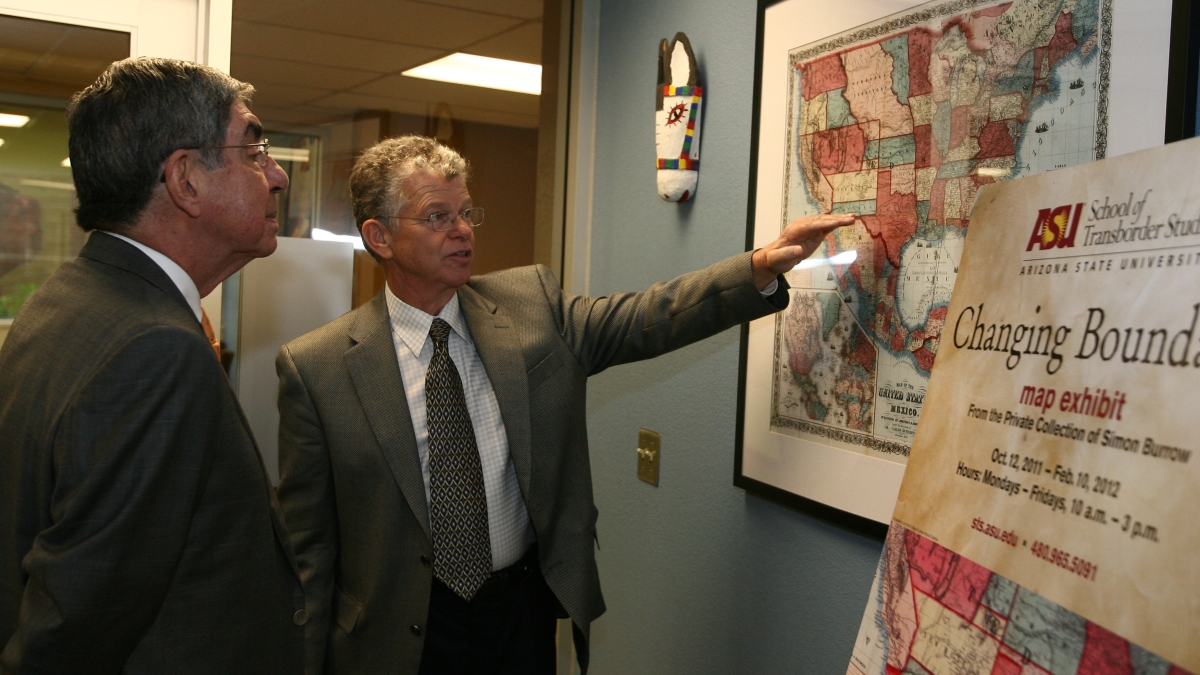The Simon Burrow collection comes home to ASU’s School of Transborder Studies

The remarkable collection of maps and books that made up the "Changing Boundaries" map exhibit, hosted by the ASU School of Transborder Studies from October 2011 through February 2012, has been permanently donated to the school by Simon Burrow – collector, global industrialist and humanist.
The collection includes the 41 maps featured in the exhibit, as well as more than 60 unframed maps, 300 archival books and ephemera. The collection illustrates the historical relationship between the United States and Mexico, notes Carlos Vélez-Ibáñez, ASU Regents’ Professor and director of the School of Transborder Studies in the College of Liberal Arts and Sciences.
“We are deeply appreciative of the collection as a wonderful teaching and learning tool by which the many contending narratives of the region and empires and conflicting republics can be told,” Vélez-Ibáñez said.
Burrow started his collection in 1984, after opening a factory in Mexicali, Baja, Mexico. As a proponent of open borders, Burrow combined his love of maps with his business interests and personal philosophy. He hung his maps in his factories in the United States and around the globe. Eventually, Burrow curated these maps and produced the exhibit that were installed at the ASU School of Transborder Studies and others in several museums and other institutions in the U.S. and Mexico. However, it was at ASU that Burrow felt that his collection would find a natural home.
During the exhibit’s installation in the School of Transborder Studies, more than 300 visitors attended, including ASU students, faculty and members of the public. In addition, secondary school teachers toured the exhibit as part a workshop held by the Arizona Geographic Alliance that examined Arizona’s changing borders.
The exhibit also was honored with a visit from Oscar Arias Sanchez, two-term president of Costa Rica and 1987 Nobel Peace Prize Laureate, who commented that “these maps tell an important story about how borders happen.”
The collection will be used by the School of Transborder Studies to promote constructive dialog and scholarly research related to the shared geographical, cultural, and economic interactions between the U.S. and Mexico.
The “Changing Boundaries” exhibit can be viewed by the public. In addition, a unique selection of the books will reside in the ASU Library’s Chicano Research Collection as a long-term loan; with the remainder retained by the school.
To schedule tours, events, or to access the collection for research or loans, see http://sts.asu.edu or call 480-965-5091.